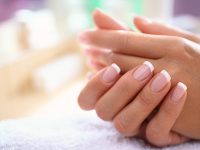In the labyrinth of societal norms and cultural expectations, one of the most glaring double standards persists in our treatment of aging women and beauty. From the relentless pressure to defy aging to the subtle derision directed toward older women, our attitudes reflect a deeply ingrained bias that demands scrutiny. In this Friday essay, we embark on a journey to unravel the complexities of ageism, beauty standards, and the intersections of gender in our perceptions of older women.
The cultural obsession with youthfulness has long been a dominant force in shaping beauty ideals. From ancient myths to modern media, the image of youthful beauty has been exalted and commodified, perpetuating a relentless pursuit of agelessness. While men are often allowed to age gracefully and celebrated for their wisdom and experience, women face a different narrative. Aging is viewed as a decline, a loss of desirability, and a departure from societal norms.
Historically, women’s worth has been tied to their appearance, with youth equated to beauty and beauty correlated to value. This notion is deeply entrenched in various aspects of society, from advertising and media to workplace dynamics and personal relationships. As women age, they encounter a myriad of challenges, ranging from discrimination in the workforce to the pressure to undergo invasive cosmetic procedures in a bid to defy the natural aging process.
The media plays a pivotal role in perpetuating these harmful narratives, portraying youth as the epitome of beauty while relegating older women to secondary roles or erasing them altogether. Older actresses often find themselves sidelined, relegated to playing mothers or grandmothers, while their male counterparts continue to land leading roles well into their later years. This disparity reflects broader societal attitudes towards aging and gender, reinforcing the idea that women lose value as they grow older.
Moreover, the beauty industry capitalizes on women’s insecurities about aging, peddling products and treatments promising eternal youthfulness. The proliferation of anti-aging creams, cosmetic procedures, and plastic surgery feeds into the notion that aging is something to be feared and fought against at all costs. The pressure to conform to unrealistic beauty standards takes a toll on women’s self-esteem and perpetuates a cycle of insecurity and dissatisfaction.
But beyond the superficial obsession with youth, there lies a deeper issue of ageism – the systemic discrimination and marginalization of older people. Ageism affects both men and women but intersects with gender in unique ways, with women facing compounded challenges due to entrenched sexism and misogyny. Older women are often subject to invisibility, dismissed as irrelevant or invisible in a youth-centric culture that prioritizes novelty and novelty over experience.
This dismissal of older women’s experiences and perspectives reflects a broader societal disregard for aging and the wisdom that comes with it. Instead of embracing the richness of lived experience, we worship at the altar of youth, ignoring the valuable contributions that older women have to offer. This not only denies more senior women agency and autonomy but also perpetuates harmful stereotypes and erases their presence from public discourse.
Furthermore, our attitudes towards aging intersect with other forms of discrimination, such as racism, classism, and ableism, exacerbating disparities and marginalizing already vulnerable populations. Older women from marginalized communities face compounded challenges, navigating intersecting systems of oppression that limit their access to resources and opportunities. Addressing ageism requires a multifaceted approach that acknowledges these intersecting dynamics and works towards dismantling systemic barriers.
Challenging ageism and redefining beauty standards requires a collective effort to shift cultural attitudes and dismantle entrenched biases. This begins with recognizing the inherent worth and dignity of all individuals, regardless of age or appearance. We must challenge the narrow definitions of beauty that exclude older women and celebrate the diversity of aging experiences.
Moreover, we must amplify the voices of older women and create spaces for their stories to be heard and their contributions to be recognized. This means advocating for greater representation in media, politics, and other spheres of influence, as well as promoting intergenerational dialogue and solidarity. By fostering empathy and understanding across generations, we can bridge the divide between youth and age and create a more inclusive society for people of all ages.
Our attitudes towards older women and beauty reveal deep-seated double standards and biases that permeate our culture. From the pressure to defy aging to the subtle derision directed towards more senior women, ageism intersects with gender in complex ways, perpetuating harmful stereotypes and marginalizing already vulnerable populations. Challenging these ingrained attitudes requires a concerted effort to shift cultural norms, celebrate the diversity of aging experiences, and amplify the voices of older women. Only then can we create a more equitable and inclusive society where age is celebrated rather than stigmatized and beauty is defined by more than just youthfulness.






















0 Comments